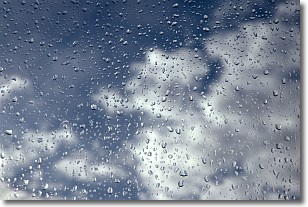Weather Alert in California
Fire Weather Watch issued July 29 at 12:10AM PDT until July 30 at 11:00PM PDT by NWS Eureka CA
AREAS AFFECTED: Lower Middle Klamath; Trinity
DESCRIPTION: ...ISOLATED TO SCATTERED DRY THUNDERSTORMS POSSIBLE WEDNESDAY AROUND KLAMATH MOUNTAINS... ..Isolated to scattered dry thunderstorms are possible Wednesday afternoon/evening with the highest confidence in NE Trinity County.. The National Weather Service in Eureka has issued a Fire Weather Watch, which is in effect from Wednesday morning through Wednesday evening. * AFFECTED AREA...Fire weather zone 204. Fire weather zone 283. * THUNDERSTORMS...Dry Thunderstorms with associated lightning are of highest concern for NE Trinity, but are also possible for areas in the southwest region of the Klamath Mountains of California. * OUTFLOW WINDS...Gusty erratic outflow winds are possible. * IMPACTS...Lightning strikes may start fires.
INSTRUCTION: A Fire Weather Watch means that critical fire weather conditions are forecast to occur. Listen for later forecasts and possible Red Flag Warnings.
Want more detail? Get the Complete 7 Day and Night Detailed Forecast!
Current U.S. National Radar--Current
The Current National Weather Radar is shown below with a UTC Time (subtract 5 hours from UTC to get Eastern Time).

National Weather Forecast--Current
The Current National Weather Forecast and National Weather Map are shown below.

National Weather Forecast for Tomorrow
Tomorrow National Weather Forecast and Tomorrow National Weather Map are show below.

North America Water Vapor (Moisture)
This map shows recent moisture content over North America. Bright and colored areas show high moisture (ie, clouds); brown indicates very little moisture present; black indicates no moisture.

Weather Topic: What are Cumulonimbus Clouds?
Home - Education - Cloud Types - Cumulonimbus Clouds
 Next Topic: Cumulus Clouds
Next Topic: Cumulus Clouds
The final form taken by a growing cumulus cloud is the
cumulonimbus cloud, which is very tall and dense.
The tower of a cumulonimbus cloud can soar 23 km into the atmosphere, although
most commonly they stop growing at an altitude of 6 km.
Even small cumulonimbus clouds appear very large in comparison to other cloud types.
They can signal the approach of stormy weather, such as thunderstorms or blizzards.
Next Topic: Cumulus Clouds
Weather Topic: What is Drizzle?
Home - Education - Precipitation - Drizzle
 Next Topic: Evaporation
Next Topic: Evaporation
Drizzle is precipitation in the form of water droplets which are
smaller than raindrops.
Drizzle is characterized by fine, gently falling droplets and typically does not
impact human habitation in a negative way. The exception to this is freezing drizzle,
a condition where drizzle freezes immediately upon reaching earth's surface.
Freezing drizzle is still less dangerous than freezing rain, but can
potentially result in hazardous road conditions.
Next Topic: Evaporation
Current conditions powered by WeatherAPI.com




